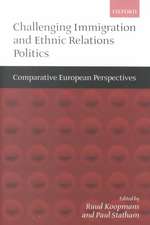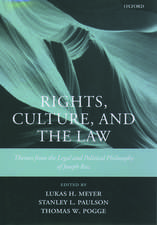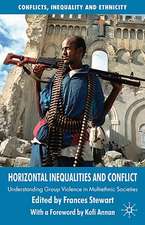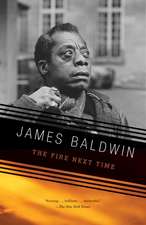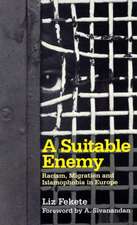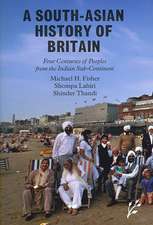The Postcolonial Eye: White Australian Desire and the Visual Field of Race
Autor Alison Ravenscroften Limba Engleză Paperback – 15 noi 2016
| Toate formatele și edițiile | Preț | Express |
|---|---|---|
| Paperback (1) | 469.34 lei 6-8 săpt. | |
| Taylor & Francis – 15 noi 2016 | 469.34 lei 6-8 săpt. | |
| Hardback (1) | 1109.04 lei 6-8 săpt. | |
| Taylor & Francis – 22 mar 2012 | 1109.04 lei 6-8 săpt. |
Preț: 469.34 lei
Nou
Puncte Express: 704
Preț estimativ în valută:
89.82€ • 93.43$ • 74.15£
89.82€ • 93.43$ • 74.15£
Carte tipărită la comandă
Livrare economică 14-28 aprilie
Preluare comenzi: 021 569.72.76
Specificații
ISBN-13: 9781138261495
ISBN-10: 1138261491
Pagini: 194
Dimensiuni: 156 x 234 mm
Greutate: 0.45 kg
Ediția:1
Editura: Taylor & Francis
Colecția Routledge
Locul publicării:Oxford, United Kingdom
ISBN-10: 1138261491
Pagini: 194
Dimensiuni: 156 x 234 mm
Greutate: 0.45 kg
Ediția:1
Editura: Taylor & Francis
Colecția Routledge
Locul publicării:Oxford, United Kingdom
Cuprins
Contents: Introduction: scenes of race; Part I 'There Is and Can Be No Brute Vision': The eye and the 'I'. Part II When the Other Disappears from My Line of Sight: Coming to matter: the grounds of our embodied difference; What falls from view? On re-reading Plains of Promise; Dreaming of others: Carpentaria and its critics; A postcolonial uncanny. Part III The Image of My Own Desire: White men as hidden spectators; White women looking on; 'Matron always carried a small whip'. Part IV Whiteness and Its Veils: Darkness casts its light: Australian blackface; Resisting a white spectator's enjoyment: Benang's aesthetics; Bibliography; Index.
Notă biografică
Alison Ravenscroft is in the English Department in the School of Communication, Arts and Critical Enquiry at La Trobe University, Australia.
Recenzii
'This exquisitely written and important book combines the most sophisticated aspects of critical theory with the important question of race and vision. In focusing on the contemporary Australian scene, Ravenscroft demonstrates an acute, tortured and urgent problem of race. And it is precisely because of this specificity that Ravenscroft is able to avoid the generalizing claims that dominate many modes of critical theory. The Postcolonial Eye will be hailed as a major contribution to race theory, postcolonial theory, political theory and ethics.' Claire Colebrook, Penn State University, USA 'Ravenscroft writes with passion, flair and clarity despite the layered complexity of her argument. Although, as I have indicated above, the book is engaged with critical literary studies, it has a much broader relevance to feminist theory, postcolonial studies and critical race and whiteness studies and deserves a wide readership. It is especially relevant and inspiring to those of us struggling with ’difference’ and the ’post’ in the postcolonial.' Australian Feminist Studies ’For those interested in exploring questions of how white settler subjects can engage with writing about and by Indigenous people, this book is certainly worth reading. Theoretical questions that Ravenscroft raises will enable this book to have a wide appeal to many scholars, especially those with an interest in postcolonial studies, critical race and whiteness studies, and of course, literary studies. The case studies in the book and Ravenscroft’s focus on close readings rather than theory, makes this book an easy read and accessible to many readers.’ Australian Journal of Indigenous Education '... an important contribution to the field of postcolonial studies. Whilst most of the book focuses on Australia, Alison Ravenscroft also extends her discussion to Black-authored and white-authored portrayals of race in the US and Africa, suggesting scope for further analysis. The book will be of i
Descriere
The Postcolonial Eye is about the 'eye' and the 'I' in the contemporary Australian scene of race, specifically the subjectivity of vision and the troubled project of knowing one another across the cultural divide between white and Indigenous Australia. Though located in Australian Studies, Ravenscroft's book, in its interrogation of race and whiteness and engagement with European and American literature and criticism, has far-reaching implications for understanding the important question of race and vision.



